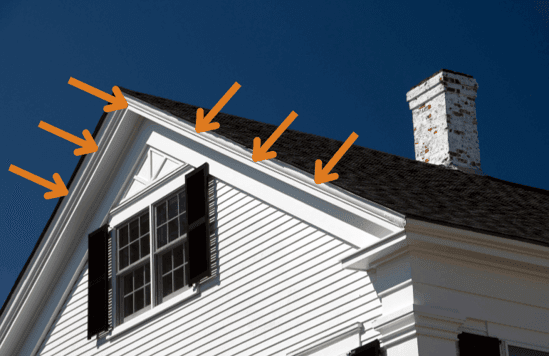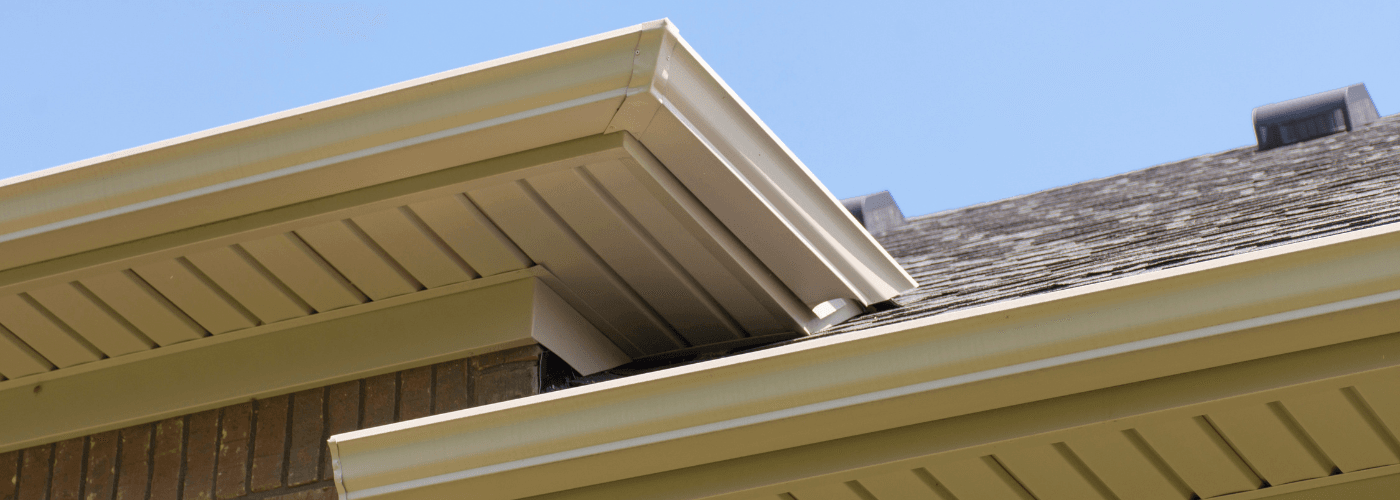If you own a home, you may have heard the term "fascia board." While you may not have known what fascia boards are and their purpose until now, they play an important role in protecting your siding, roof, and home.
Fascia is the front-facing siding panels that sit underneath your roofline, typically under the gutters. Fascia not only give your home a finished look, but it also protects your home from water infiltration and potential rodent infestation.
As a San Antonio siding expert since 1989, Southwest Exteriors is here to educate you on all you need to know when it comes to remodeling. This includes having all the knowledge you need to make the best decisions for your project.
In this article, we will discuss what fascia boards are, signs that indicate the need for a replacement, and helpful maintenance tips to keep your fascia as long-lasting as possible.
What Are Fascia Boards?
Before diving into the signs that may indicate the need for a fascia board replacement, let's first understand the role these boards play in your home's structure.
Fascia boards are horizontal boards that are typically found along the edge of the roofline, behind the gutters, and just below the eaves. Their primary function is to provide support to the bottom edge of the roof and protect it from moisture and other elements.

 The orange arrows point to the fascia on this home.
The orange arrows point to the fascia on this home.

But what exactly does this mean for your home? Well, think of fascia boards as the unsung heroes of your roof. They work tirelessly to ensure that your roof remains stable and protected. Without them, your roof's edge would be exposed to the elements, leading to potential damage and costly repairs.
Not only do fascia boards provide support, but they also play a crucial role in maintaining the overall aesthetic appeal of your home. They help create a smooth transition between the exterior wall and the roof, enhancing the architectural design.
Whether you have a traditional or modern home, fascia boards can complement the style and add a finishing touch to your property.
In addition to providing support, fascia boards also act as a barrier against moisture and other elements. They help redirect rainwater away from the roof's edge and into the gutters, preventing water from seeping into the roof and causing potential damage. This is especially important in areas with heavy rainfall or snowfall, as it helps protect your home from water-related issues.
Furthermore, fascia boards also play a role in ventilation. They allow air to circulate between the roof and the eaves, preventing heat buildup and reducing the risk of moisture-related problems, such as condensation and mold growth.
When it comes to the importance of fascia boards, it's not just about functionality; it's also about preserving the integrity and longevity of your home. By providing support, enhancing aesthetics, and protecting your siding, these often-overlooked boards play a vital role in maintaining the overall health and value of your property.
Download this FREE guide to James Hardie siding!
How Fascia Boards Complement Your Siding
Along with their functional role, fascia boards also serve an aesthetic purpose. They help create a smooth transition between the exterior wall and the roof, enhancing the overall appearance of your home.
Moreover, they play a crucial role in protecting your siding by preventing water from seeping behind it and causing damage.
When it comes to siding, fascia boards act as a natural extension of your home's exterior. They provide a clean and finished look by covering the exposed ends of the roof rafters or trusses. This not only adds visual appeal but also helps protect the underlying structure.
But the benefits of fascia boards don't stop there. By preventing water from seeping behind your siding, they help maintain the integrity of the material. This is particularly important for wood siding, as moisture can cause it to warp, rot, or become infested with insects.
Fascia boards also help prevent other types of damage to your siding, such as cracking or peeling. By acting as a barrier, they shield the siding from direct exposure to the elements, including harsh sunlight, wind, and debris.
Signs You Need a Fascia Board Replacement
Over time, your fascia boards may become damaged or deteriorated, requiring a replacement. Here are some common signs to look out for.
1. Visible Damage to the Fascia Board
If you notice any cracks, splits, or holes in your fascia boards, it's a clear indication that they need to be replaced. Damage can occur due to age, weather exposure, pests, or improper installation.
Leaving damaged fascia boards on your siding can lead to even worse problems in your future, such as water infiltration, rot, and living creatures.
2. Leaks in the Roof or Attic
Leakage in your roof or attic could be a result of a damaged fascia board. When the boards are compromised, water can infiltrate your home, leading to structural issues and potential mold growth.
If you notice water pooling in one area in your attic or see water damage to your ceiling, consider inspecting your fascia boards for any damage or separation from your home.
3. Peeling Paint or Rot on the Siding
If you observe peeling paint or signs of rot on your siding, it may be due to water damage caused by faulty fascia boards. Peeling paint may also be an indicator of old age or weather damage.
If you notice the paint peeling on your fascia, it could mean the fascia boards have become warped or misshapen due to weather. This can also be an indication that a replacement is necessary.
Schedule your commitment-free consultation with Southwest Exteriors today!
Maintaining Your Fascia Boards and Siding
Once you've replaced your fascia boards, it's essential to take proactive steps to maintain their condition and protect your siding. Here are some maintenance tips to consider.
Regular Inspection and Maintenance Tips
Regularly inspect your fascia boards for any signs of damage or wear. Clean them regularly to remove dirt, debris, and potential nesting spots for pests.
Ensure that your gutters are clean and properly aligned to prevent water overflow onto the fascia boards.
Preventing Damage to Your Fascia Boards and Siding
Prevention is key to extending the lifespan of your fascia boards and siding. Keep tree branches trimmed to prevent them from scraping against your home during storms. Avoid power washing your siding too aggressively, as it can damage both the siding and fascia boards.
By following these maintenance tips and promptly addressing any issues, you can ensure the longevity and functionality of your fascia boards while preserving the appearance of your siding.
Are Your Fascia Boards Ready For Replacement?
While fascia boards may seem like a small and insignificant part of your home's exterior, they actually play a significant role in both functionality and aesthetics.
Your fascia boards play a vital role in protecting your home's structure and complementing your siding. It's important to keep an eye out for signs of damage and address them promptly through a replacement process.
By providing support to the roof, protecting against moisture, and complementing your siding, these boards are an essential component of your home's overall structure and appearance.
Whether you decide to take on the project yourself or hire professionals, maintaining your fascia boards and siding through regular inspections and proactive measures will help prolong their lifespan and keep your home looking its best.
Want to learn more about whether you should replace your fascia? Check out this article that outlines the benefits of replacing your soffit and fascia with your siding so you can take the next steps toward your project.

